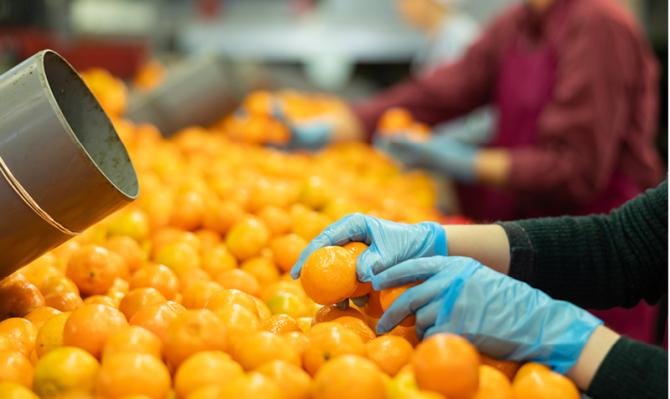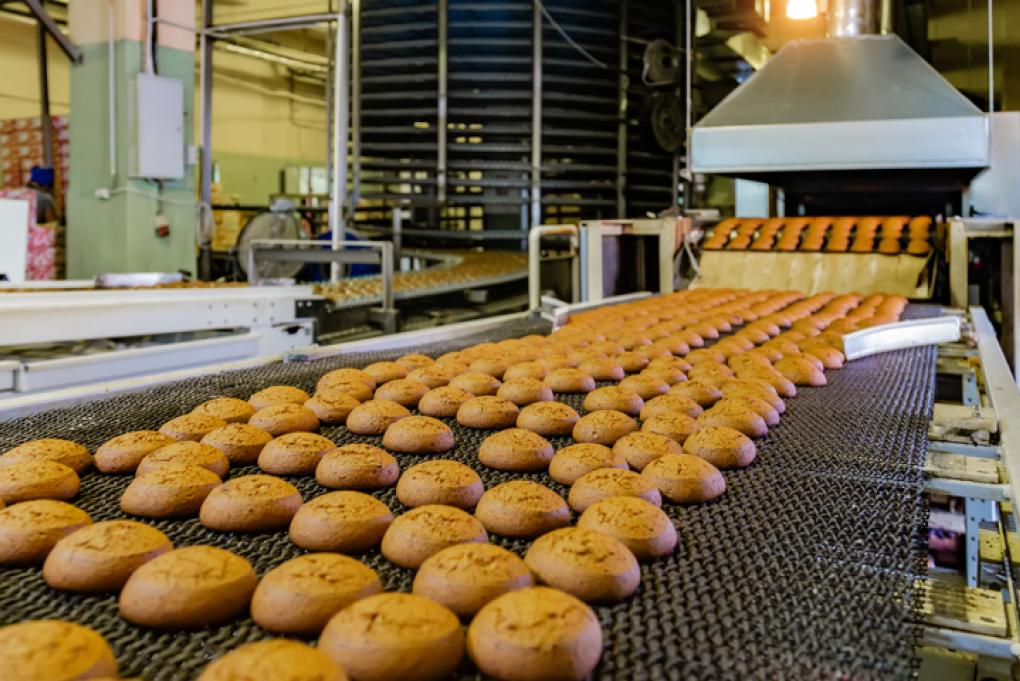
The challenge for Spain’s agrifood sector of remaining competitive in the face of adverse conditions
Extreme drought and rising costs have created a perfect storm that has nonetheless failed to dampen the high spirits of Spain’s agrifood exports in recent years. The decline in the volume of exports experienced by the sector, offset by the increase in prices, is the result of an adverse situation but the various competitiveness indicators look resilient and global market shares are still behaving very favourably. Even so, the sector must continue to invest in order to ensure its production becomes even more digitised, sustainable and competitive, a mission of vital importance given the huge challenge posed by climate change for the country.
The fall in agricultural production in Spain
As mentioned in the previous article, in 2022 Spain’s agricultural production recorded a sharp fall in volume terms (–13.6%), interrupting the upward trend observed in previous years. Although this decline was widespread across all European crops and countries, the drop in Spain was much greater than in the EU as a whole (–4.6%) and also compared with the top 5 European producers (excluding Spain): Germany (–4.8%), France (+2.7%), Italy (–2.1%) and the Netherlands (–3.9%). Moreover, the European Commission’s projections for 2023, shown in the table below, are once again particularly negative for Spain,16 in contrast to a more positive forecast for the rest of the top 5 and the EU average. The sharp declines predicted in cereals, of more than 30%, are particularly worrying.
- 16See the article «Production costs and drought are affecting Spain’s agrifood sector» in this Sector Report.
The European Commission’s agricultural production forecasts for 2023 are especially negative for Spain, particularly the drop in cereal yields of more than 30%
Extreme drought, the first shock for Spanish agricultural production
The biggest drop in Spanish agricultural production is due to a perfect storm of two shocks, more severe in Spain than in its European neighbours: one is related to climate and the other to costs.
The prolonged drought we’ve been experiencing since 2022 is extraordinary at a European level17 but its impact is greater in the western Mediterranean, where crops have been particularly affected by low rainfall, intense heat waves and high levels of sunshine. In Spain, the volume of precipitation recorded in 2022 was 533 mm, 16% below the historical average, and this affected crops across the board although especially cereals and fruits. This situation hasn’t improved over the first 11 months of the current hydrological year (October 2022-August 2023): overall, precipitation is 17.1% lower than the average for the reference period, with a particularly significant lack of rainfall in the internal basins of Catalonia and Andalusian basins. According to the data at 31 August 2023, 26% of Spain’s territory was in a situation of prolonged drought, related to the so-called meteorological drought.18 As a consequence, the water accumulated in reservoirs is at a very low level (36.8% of their capacity in the week of 18 September), clearly below the last decade’s average for the same period (49.9%).19
- 17Europe has suffered recurrent droughts in the past 20 years (2003, 2012, 2018, 2019, 2020, 2022 and 2023) but these situations are becoming more frequent and widespread. In addition, the drought of the summer of 2022, classified as severe to extreme in Europe and aggravated by record temperatures across the continent, was followed by an exceptionally dry and warm winter, which meant that many aquifers and reservoirs were unable to recover.
- 18Meteorological drought is a natural phenomenon of a lack of precipitation, which leads to a significant decrease in circulating flows of water. It’s different from situations of scarcity, which are related to cyclical problems in meeting the demands of different users. See the Ministry for Ecological Transition and the Demographic Challenge (2023): «Informe de la situación de sequía y escasez».
- 19See Embalses.net - Estado de los Embalses, pantanos y presas de España.


As can be observed in the map, the Combined Drought Indicator20 shows a widespread alert for Spain. In addition, various international organisations have noted that Spain is one of the countries that will suffer most from the effects of climate change in Europe (see the map below), with more problems of water availability and the consequent impact on agriculture. This phenomenon could also lead to changes in land use, such as increasing the cultivation of tropical fruits to the detriment of vines.21
- 20The CDI, developed by the European Drought Observatory (EDO), is used to identify areas that may be affected by agricultural drought and is based on a combination of indicators of precipitation, soil moisture and vegetation conditions. Areas are classified according to three primary drought classes (watch, warning and alert), plus three additional classifications that identify the different stages of recovery from drought.
- 21OECD (2023): «Policies for the future of farming and food in Spain».

Rising costs, the second shock to Spanish agricultural production
In recent years, Spain’s agrifood sector has had to face higher production costs. If we look at the intermediate consumption of the Economic Accounts for Agriculture (understood as the value of all goods and services used as inputs in the production process), we can see that Spain was also harder hit by the cost shock of 2021-2022: the increase in intermediate consumption in Spain (+45.6%) was higher than both the EU average (+33.0%) and that of the other top 5 countries (around +20.0% in Germany and France and around +35.0% in Italy and the Netherlands).
Spain was hardest hit by the cost shock of 2021-2022: the increase in intermediate consumption in Spain (+45.6%) was higher than the EU average (+33%)
Energy, fertilisers and, above all, animal feed were mainly responsible for the increase in costs in the agrifood sector last year. Certain differences can be seen if we compare the price trend of these inputs (measured by the deflator) in Spain with the top 5 countries and EU average. (i) The rise in energy prices in Spain was similar to that of the EU (52.4% vs. 52.6%) although somewhat higher than the countries analysed in this section, except for the Netherlands. (ii) In the case of fertilisers, only Italy recorded a smaller increase than the 74.3% recorded in Spain (87.1% in the EU). (iii) Feed rose by 35.1%, somewhat higher than in the countries analysed and the EU average (29.4%). Spain’s bigger increase in total costs is mostly due to the large share of animal feed in its cost structure, accounting for 54.4% of total intermediate consumption (39.3% in the EU).
The bigger increase in total costs is mostly due to the large share of animal feed in Spain’s cost structure, accounting for 54.4% of total intermediate consumption (39.3% in the EU)
Nevertheless, Spain’s agrifood exports are still performing well
The fact that the agrifood sector is one of the main exporters for the Spanish economy22 is nothing new. Since 2010 it has seen an average annual growth of 7.3% in the value of its exports compared with 6.6% for all exported goods, totalling almost 67 billion euros in 2022. Average annual growth has been slightly lower in volume terms, namely 3.2%, similar to the 3.1% growth for all exported goods, totalling more than 37.5 million tonnes. Last year, agrifood accounted for 17.2% of the country’s total exports in value and 20.4% in volume, surpassing the 2014-2019 figures (16.9% and 19.4%, respectively). Moreover, it has shown itself to be remarkably resilient, even in such adverse circumstances as the recent pandemic when international trade came to a historic halt.23
In comparative terms, Spanish agrifood exports have performed better than those of our main European rivals. However, while growth in value terms has remained strong over the last two years, driven by the high prices of most products on international markets, in volume terms they have recorded declines of 5.5% in 2022 and 9.1% in 2023 (year-on-year to June). Nonetheless, this drop was less marked than in the top 5 countries or the EU as a whole (–15.1%). The volumes exported by Spain have returned to their 2017 levels while the Netherlands, Germany and, above all, France are still lagging behind.
- 22The agrifood sector includes categories 1-24 of the TARIC system.
- 23In 2020, while total exports fell by 9.4% in value and 5.4% in volume, agrifood exports grew by 4.9% and 0.8%, respectively. See the article «The resilience of Spanish agrifood exports», published in the Agrifood Sector Report for 2020.
The reduction (in volume terms) in Spanish exports has been particularly marked, more than 40% year-on-year in S1 2023 for some products such as oilseeds and cereals, although it’s true that these only represent 5.9% and 2.5% of all exports, respectively (2022 data). Italy and France also saw considerable reductions in their cereal exports in the first half of 2023 (–43.5% and –31.7% year-on-year, respectively), a particularly significant decline in the French case as cereals account for more than 45% of its agrifood exports. Meanwhile, the Netherlands’ exports of oils and fats plummeted by 80.9% after breaking records in 2022 when sales tripled, whilst in Germany exports of sugars and confectionery fell by 32.0%.
The competitiveness indicators for the agrifood sector remain stable for the time being
This recent weakening of exports could be interpreted as the Spanish agrifood sector becoming less competitive on international markets; i.e. with less capacity to provide higher value-added products offering a better quality/price ratio. However, various indicators for agrifood exports show a relatively favourable trend compared with the rest of the top 5 countries.
Firstly, costs are a fundamental factor in the competitiveness of companies, sectors and countries, especially when there’s little product differentiation and the product is made using less complex technologies and low-skilled labour. Within the cost structure, labour costs play a very important role. There are no tensions in Spain’s agricultural sector in terms of unit labour costs (ULC); in fact, this index has improved significantly in recent years, in contrast to the almost widespread deterioration experienced by its rivals (with the exception of France). Despite a slight upturn after the pandemic crisis, this positive differential has been maintained. If we compare the 2022 figure with the years prior to the outbreak of the pandemic (2014-2019 average), Spain’s agricultural sector also comes out well: the adjustment in ULC was higher only in Germany (–4.2% vs. –3.0% in Spain).
The favourable trend in Spain’s ULC compared with other countries is consistent with the differences in productivity. In this case, the improvement (in real terms) in 2022 compared with the pre-pandemic period (2014-2019) was 11.5% (8.9% in the EU), a record surpassed only by Germany (17.9%).
Another sign of the competitive advantage of Spain’s agrifood sector is its importance for the country’s trade balance. This can be seen in the notable surplus, the largest at the level of sector, which has been recorded uninterruptedly since 1996. Despite a certain normalisation last year after the record highs of 2020-2021 (when, due to the effect of the pandemic, it approached 18 billion euros), the surplus has remained at a very high level: 13,096 million (1.0% of GDP), well above the 2014-2019 average (10,885 million).
Finally, further proof of the strength of Spain’s agrifood sector is its large share of world trade and its good relative trend over time. Based on 2021 data (the latest available from the WTO), the country comes seventh in the global ranking of exporters and fourth among European countries (behind the Netherlands, Germany and France but ahead of Italy), with 3.8% of world exports, a much larger share than our proportion of total trade in goods (1.7%).
Moreover, since 2010 Spain has improved its world share in agrifood exports (+0.3 pp), a remarkable fact when compared with other countries, especially the US which has lost 0.8 points of share over the same period, France (–1.2 points) and the Netherlands (–1.1 points). Looking at the top 5 European players, for which we have data up to June 2023, Spanish exports have gained in share, going from 10.9% in 2010 to 16.1%.
In short, production in Spain’s agricultural sector fell sharply in 2022 and estimates suggest it will fall again in 2023 due to the sharp increase in costs and the effects of climate change, which have hit the Spanish countryside harder than other major European agrifood producers. However, despite this drop in production, Spanish agrifood exports have performed relatively well and the sector’s competitiveness indicators do not look like deteriorating, at least for the time being.



